The difference between Yunnan Coffee Bean Iron pickup and Katim Why is the flavor of Katim coffee beans criticized
Qianjie has its own coffee farm in Lincang, Yunnan, with coffee trees of iron pickup varieties. Why grow tin cards instead of Katim? Because Qianjie wants everyone to see the charm of Yunnan coffee beans, and the tin card variety is one of the oldest varieties derived from Arabica, the flavor performance is naturally the most primitive and best, so Qianjie coffee chose it.
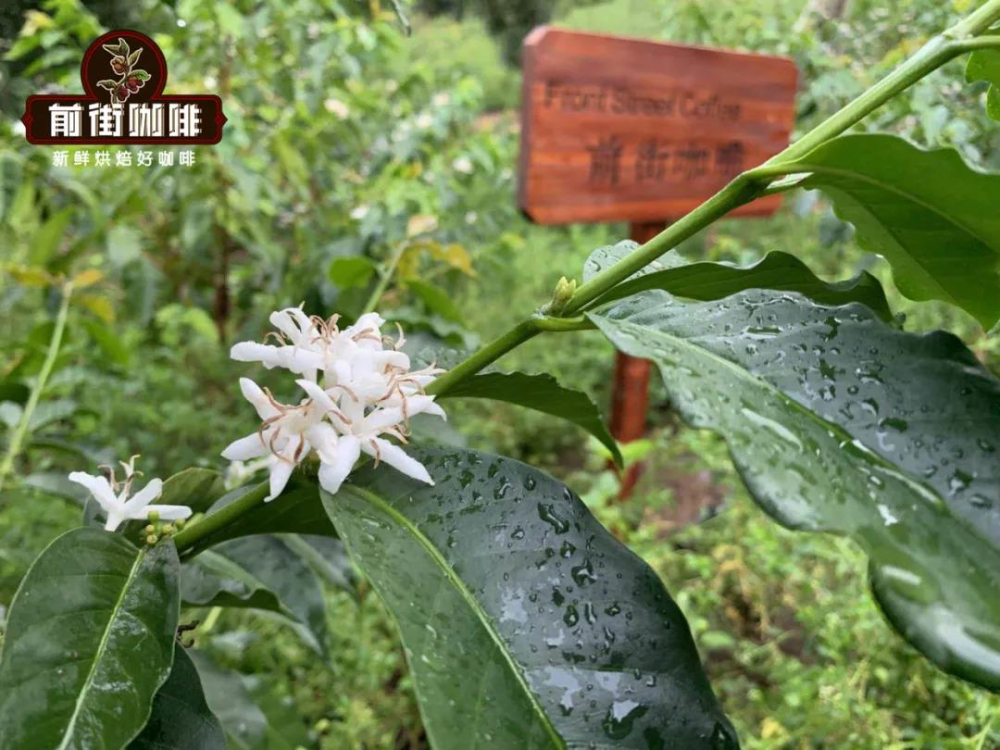
In fact, Yunnan coffee was also planted in the beginning. Yunnan small-grain coffee refers to Arabica coffee beans. At that time, French missionary Tian Deneng brought coffee species (iron card) to Yunnan from Vietnam. After successfully planting it in Zhugula Village, Binchuan County, Yunnan Province, people told people that it was small-grain coffee (because Arabica coffee beans belong to small-fruit coffee, while Robusta belongs to medium-sized fruit coffee). Arabica coffee beans are called Yunnan small grains in Yunnan. But at the end of the 19th century, leaf rust swept through most of the world's iron pickups. In 1959, a hybrid of Timor and Kaddura developed by CIFC, the Portuguese coffee leaf rust research center, Catimor was widely promoted because of its strong disease resistance and high production capacity. At first, the Yunnan producing areas of China planted elegant but fragile tin cards, but later, international brands such as Nestl é and Starbucks entered the Chinese coffee market and looked for coffee ingredients. In order to achieve higher economic benefits, and in the case of international brands such as Nestl é promoting Katim varieties, coffee farmers have cut down all the fine varieties of iron pickups and replaced them with Katim, which has high yield and strong disease resistance.
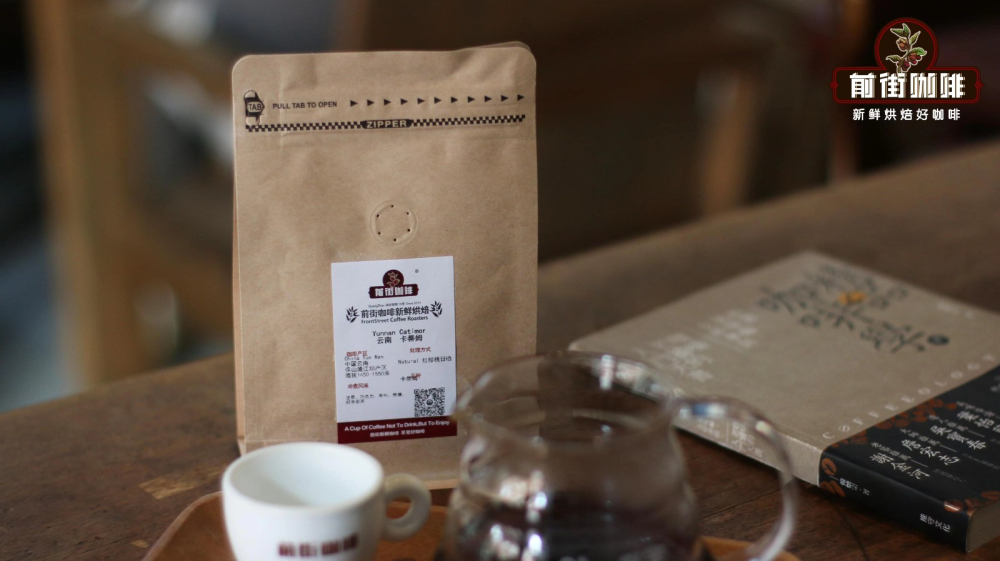
Because of this, Katim was born, it was developed in 1959 by the Portuguese coffee leaf rust research center CIFC, their research direction is disease resistance, high yield. But also to maintain a good flavor, so the use of Robusta derived from the Tim variety of coffee and Arabica derived from the Kaddura variety of coffee to cross, so that the development of a new variety named Katim. And Katim didn't let everyone down, inheriting Tim's Robusta gene, making it better resistant to coffee berry disease and coffee leaf rust, and more resistant to diseases and insect pests, but it is often criticized for its performance in the cup.

Katim fruit ripens quickly and has high yield, which requires adequate fertilizer supply and shade. In addition, Katim's high yield corresponds to a relatively shorter business life, with an average of only ten years. After the Qianjie Cup, it is found that the Katim Cup planted at low altitude has no obvious advantages and disadvantages compared with other commercial varieties.
Iron pickup coffee as one of the ancient coffee varieties, has a quiet and clean flavor, as well as balanced features, high cleanliness of the taste, which can not be achieved by special treatment. The reason why Yunnan farmers are unwilling to grow iron pickup coffee is that the yield of iron pickup varieties is not high, and they are vulnerable to insect pests, and their pay is not proportional to the harvest. On the other hand, curry farmers have no awareness of boutique coffee, so they stay away from the varieties of tin cards.

Iron pickup, also known as the old variety of small-grain coffee, its yield is less, cultivation is difficult, so the price is much higher than ordinary small-grain coffee. Tibica coffee, native to Ethiopia and southeastern Sudan, is the most widely cultivated variety of coffee in the Western Hemisphere. The plant is stronger, but not light-tolerant, and the yield is higher in Hawaii. The top leaf of iron pickup is red copper, which is called red top coffee, which belongs to the ancient coffee with elegant flavor, but its physique is weak, its disease resistance is poor and it is easy to catch rust leaf disease, and its fruit yield is less, which is not in line with economic benefits.
Because the Katim variety carries the Robustad gene, inheriting Robusta's strong disease resistance, but also inheriting Robusta's criticized flavor, Han Huaizong once described Katim as "demon-like tail rhyme". With the development of planting technology and the improvement of varieties, the Katim flavor is becoming more and more elegant.
Main coffee producing areas in Yunnan
Coffee growing areas in Yunnan are mainly distributed in Lincang, Baoshan, Simao, Xishuangbanna, Dehong and other prefectures.
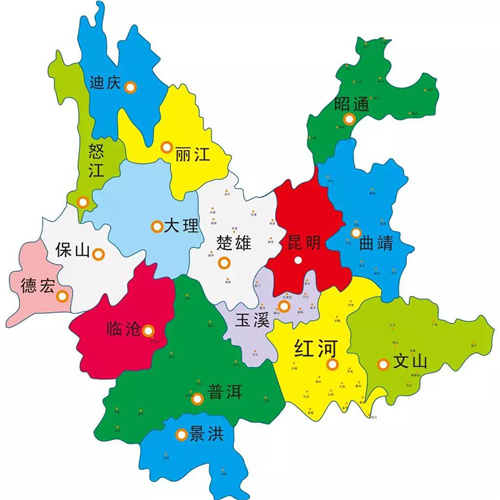
Lincang City, the producing area of Lincang, is located in the southwest of Yunnan Province. The Tropic of Cancer runs through the south. It is adjacent to Pu'er to the east. It is bordered by Dali to the north, Baoshan to the west and Myanmar to the southwest. Therefore, it is also known as the Lancang River, which is a bright pearl in the southwest border of China. The annual average temperature in Lincang City is between 16.8 and 17.2 ℃. The dry and humid seasons are obvious and the sunshine is abundant.

Lincang City has become the focus of many coffee enterprises because of its unique geographical location and climatic conditions. 200 mu and 100 mu of high-quality coffee seedling bases have been established in Mengding Town and Lincang Happy Farm in Gengma Autonomous County, and Yunnan coffee is also known as Yunnan small grains in Gengma, Zhenkang, Yunxian and Cangyuan. The particles of coffee beans are uniform and full, and the taste is mellow and moderate.
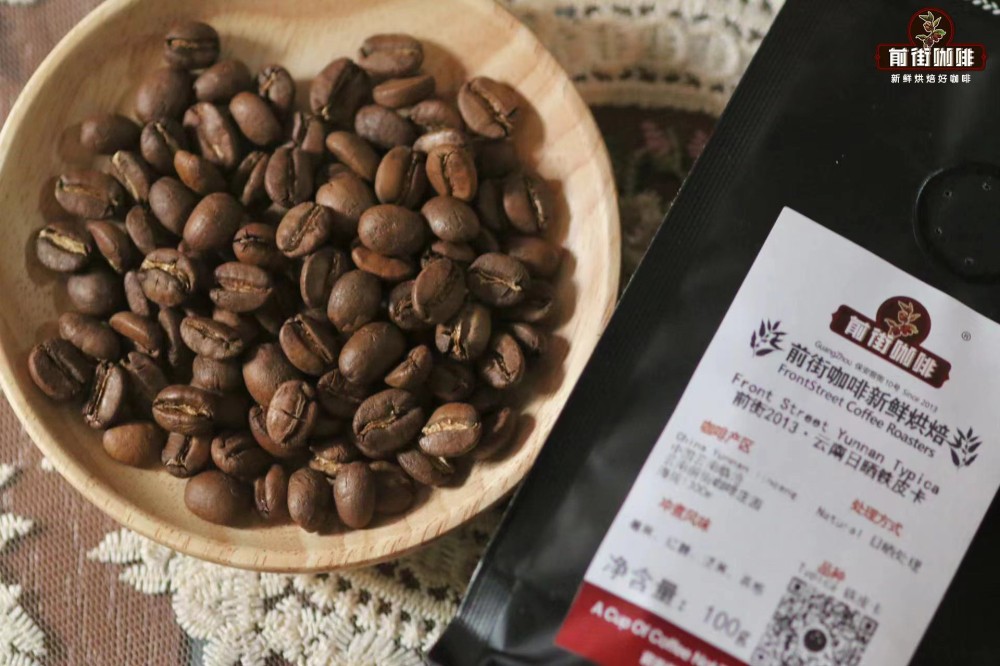
Because of this, Qianjie, in order to let more friends see the charm of Yunnan coffee beans, Qianjie has set up its own coffee estate in Lincang, Yunnan, mainly growing tin card varieties of coffee. Because the iron card variety is one of the oldest Arabica derived qualities, the flavor performance is naturally the most primitive and best, so Qianjie coffee chose it. The coffee from Qianjie Coffee Manor came out in response-Qianjie drying iron pickup coffee on 2013, of course, Qianjie had a lot of hardships on the way to grow this coffee.
Baoshan
Baoshan area has a long history of growing coffee, and it is recognized as the best small-grain coffee producing area, and it is one of the coffee producing areas with good coffee quality in the country and even in the world.

The average temperature of Baoshan is 21.5℃, and the highest is 40.4℃, which is basically frost-free all the year round. It is recognized as the best producing area of small-grain coffee. The small-grain coffee cultivated here is famous at home and abroad for its strong but not bitter, fragrant but not strong, well-proportioned small noodles, mellow and fruity. International Coffee Organization tasting experts evaluate Yunnan coffee as the highest quality coffee in the world, such as Colombian wet-processed small-grain coffee. The Yunnan small grain coffee in Qianjie comes from Baoshan producing area.
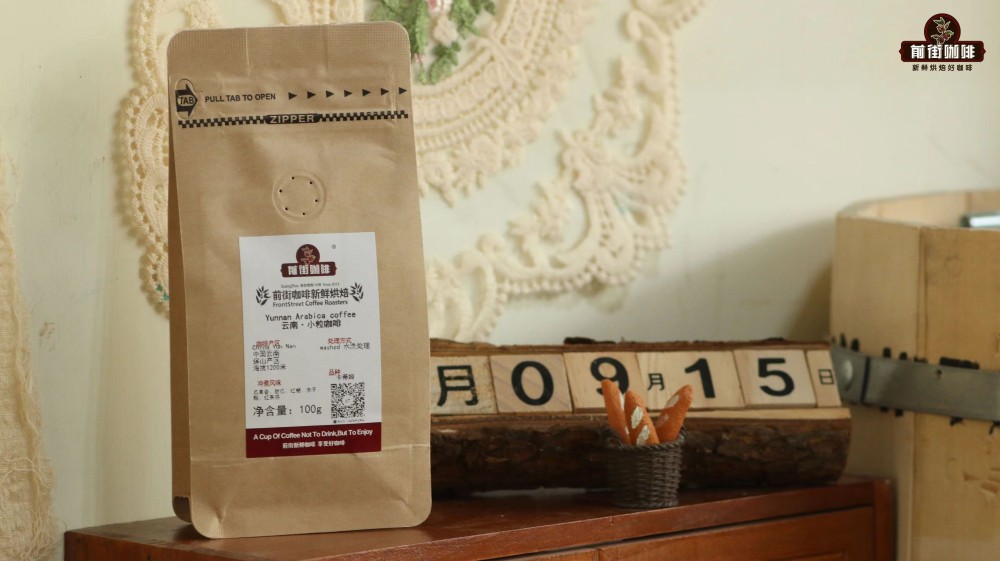
Yunnan coffee bean treatment method
The weather in Yunnan is rainy and foggy, so washing treatment has become the most commonly used method of coffee treatment in Yunnan. Of course, there are also sun treatments, such as Sun Katim Coffee in Qianjie and Iron pickup Coffee in Qianjie on 2013.
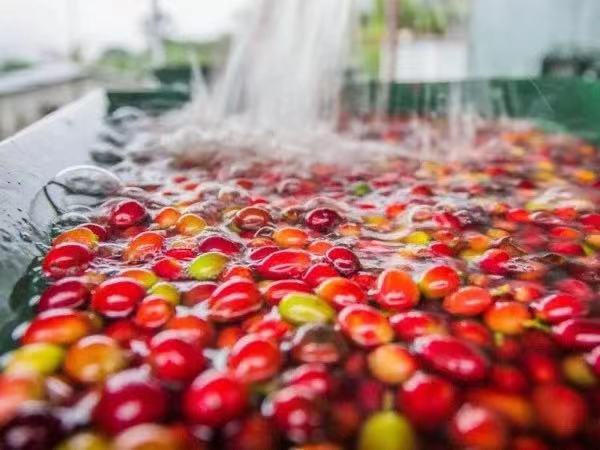
Washing treatment: the harvested berries are peeled to separate most of the pulp from the coffee beans, then the shelled beans are directed to a clean sink, soaked in water and fermented to thoroughly remove the residual pulp layer. Through washing, unripe beans and defective beans are selected because of buoyancy, and the fermentation process is easier to control, so the flavor is not mixed like sun beans, but shows obvious acidity, complexity and cleaner characteristics in the cup.
Sun treatment: the whole mature and complete coffee red cherry is evenly spread on the sun bed for sun drying. Due to the preservation of the complete peel and pulp layer, the drying process is more complex and takes longer. In order to avoid excessive fermentation, staff are required to turn over each coffee red cherry on time and frequently.
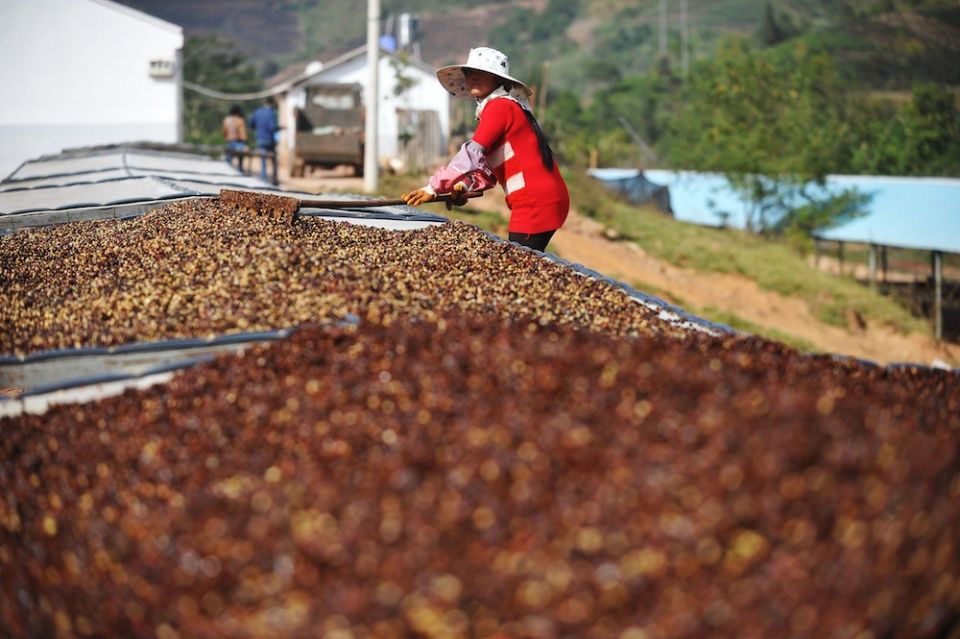
Due to the use of Japanese treatment, this tanning iron pickup in Qianjie has a very strong aroma and outstanding sweetness, with preserved fruit-like sweetness, soft plum acid, rich nutty notes, and a sweet brown sugar and black tea finish. When buying this coffee bean in Qianjie, many friends will ask the barista in Qianjie how to cook it to give full play to its taste. The front street sun tin card fragrance but not strong, strong but not bitter, with the traditional Yunnan small-grain coffee taste.
Qianjie brewing Qianjie Sun Iron pickup Coffee parameters:
In order to retain the sweet and sour and tea characteristics of Yunnan coffee, Qianjie coffee roasted it moderately. V60 filter cup can be used when brewing, powder-water ratio at 1:15, medium grinding (about the size of coarse sugar / 80% screening rate of China 20 standard sieve), water temperature of 91 degrees.

The use of segmented extraction, with twice the amount of coffee powder water for steaming, that is, 30 grams of water for 30 seconds, and the reason for the need for steaming process is to make coffee powder can discharge the internal carbon dioxide gas, so that the latter stage of the extraction is better stable. When the small water is injected around the circle to 125 grams, the injection will be stopped until 225 grams, then the filter cup will be removed after the dripping of the filter cup, and the extraction time will be 2 minutes 39 grams. Next, pick up and shake the whole cup of coffee, then pour it into the cup and taste it.
[Qianjie 2013Sun Iron pickup Coffee] has a thick, sour and sweet taste, with citrus and berry flavors, with a hint of fermented wine, caramel sweetness, creamy finish, black tea.
Suggestions for making coffee in front of the street:

For the brewing of coffee, Qianjie has always believed that the freshness of coffee beans has a great relationship with the flavor of coffee, so the coffee beans shipped in Qianjie coffee are roasted within 5 days. The purpose of Qianjie roasting is "freshly roasted coffee", so that every guest who places an order is the freshest coffee when he receives it. The bean cultivation period of coffee is about 4-7 days, so when the guest gets it, it is the time when the flavor is the best.
For those who need to be ground, Qianjie warmly reminds you that if the coffee beans are ground in advance, there is no need to raise the beans, because in the process of transportation, the pressure caused by carbon dioxide in the package can also make the coffee flavor round. so you can drink a cup of coffee as soon as you receive the coffee powder. But the coffee powder needs to be brewed in time, because the coffee powder oxidizes more quickly after contact with the air, that is to say, the flavor of the coffee will dissipate more quickly, and the flavor of the coffee is not so good. Therefore, Qianjie suggests buying whole beans, grinding and flushing now, so that we can better taste the flavor of coffee.
Professional coffee knowledge exchange more coffee bean information please follow the coffee workshop (Wechat official account cafe_style)
For more boutique coffee beans, please add private Qianjie coffee on Wechat. WeChat account: qjcoffeex
Important Notice :
前街咖啡 FrontStreet Coffee has moved to new addredd:
FrontStreet Coffee Address: 315,Donghua East Road,GuangZhou
Tel:020 38364473
- Prev
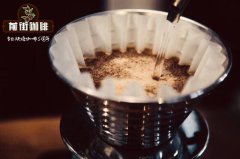
How to distinguish the shape of Katim coffee beans and how to distinguish Katim coffee? look at these two points.
Professional coffee knowledge exchange more coffee bean information please follow the coffee workshop (Wechat official account cafe_style) front street-Katim variety introduction Katim Catimor-- is its real name, as an Arabica bean, it has 1 amp 4 Robsta pedigree. The height of the Katim coffee tree is nearly 2 meters ~ there are a large number of plants in Pu'er, Dehong, Baoshan and Lincang areas of Yunnan, coupled with Katim fruit.
- Next

What is the difference between Yunnan Baoshan Katim coffee beans and Yunnan Katim honey processing sweet?
Professional coffee knowledge exchange More coffee bean information Please pay attention to coffee workshop (Weixin Official Accounts cafe_style) Front Street-Katim variety introduction Baoshan coffee planting began in the mid-1950s, the first coffee seedlings were introduced by the late patriotic overseas Chinese Liang Jinshan in Southeast Asia. Baoshan coffee planting area is located at the eastern foot of Gaoligong Mountain, belonging to dry and hot valley zone, and the climate belongs to South Asian heat
Related
- Beginners will see the "Coffee pull flower" guide!
- What is the difference between ice blog purified milk and ordinary milk coffee?
- Why is the Philippines the largest producer of crops in Liberia?
- For coffee extraction, should the fine powder be retained?
- How does extracted espresso fill pressed powder? How much strength does it take to press the powder?
- How to make jasmine cold extract coffee? Is the jasmine + latte good?
- Will this little toy really make the coffee taste better? How does Lily Drip affect coffee extraction?
- Will the action of slapping the filter cup also affect coffee extraction?
- What's the difference between powder-to-water ratio and powder-to-liquid ratio?
- What is the Ethiopian local species? What does it have to do with Heirloom native species?

